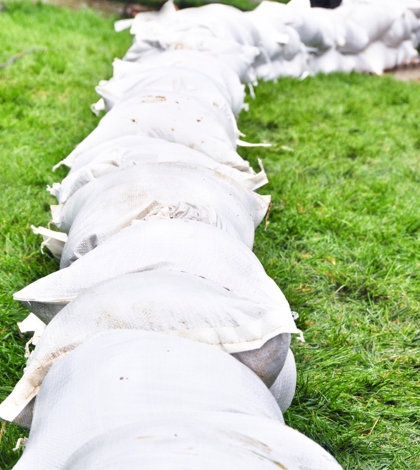Now that we’re heading into the winter months, it’s essential for homeowners to know how to prepare for El Nino. With the likelihood of flooding looking more and more like a reality, here is how you can protect your home:
Sandbag materials:
- Closed knit burlap bags
- Sand (soil if sand is unavailable)
- Concrete mix (optional)
Making sandbags:
- Fill your burlap bag one-third to halfway full with sand. It’s critical to leave room for other sandbags to stack on top of the opening, which will ensure the sand stays dry. If you want to make your sandbags even sturdier, place a small amount of concrete mix on the top of the sand. This will protect the sand from water and lengthen its lifetime.
- Fold over the opening to keep materials from falling out of the burlap bag.
- Evaluate areas of your property that are the most likely to be flooded. As a general rule of thumb, sandbags should only be stacked two high and staggered. This creates more stability than stacking them directly on top of one another. The only time more than two rows should be used is when the sandbags are being stacked directly against a home.
- If you’re at the bottom of a hill, you should build a sandbag wall against your house. You have the option of leaving space between the sandbags and your home or building the wall right against your home.
- If you’re concerned about mudslides or debris from your yard, especially if you live on the top of a hill, it is best to create a barrier along the perimeter of the yard.
Emergency sandbags:
If you run out of time prepping your sandbags or you run out before El Nino strikes, place the sand directly on the ground in a large pile. Use a plastic tarp to lie over the sand. This will create a temporary levee, which should sustain you for a short period of time.
 California Water News Daily Your Source For Water News in California
California Water News Daily Your Source For Water News in California


